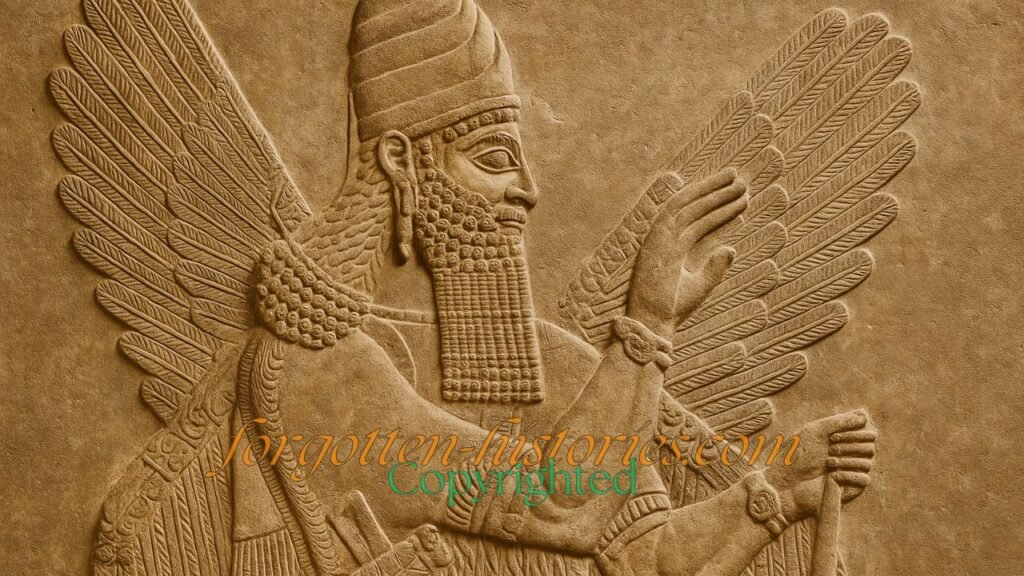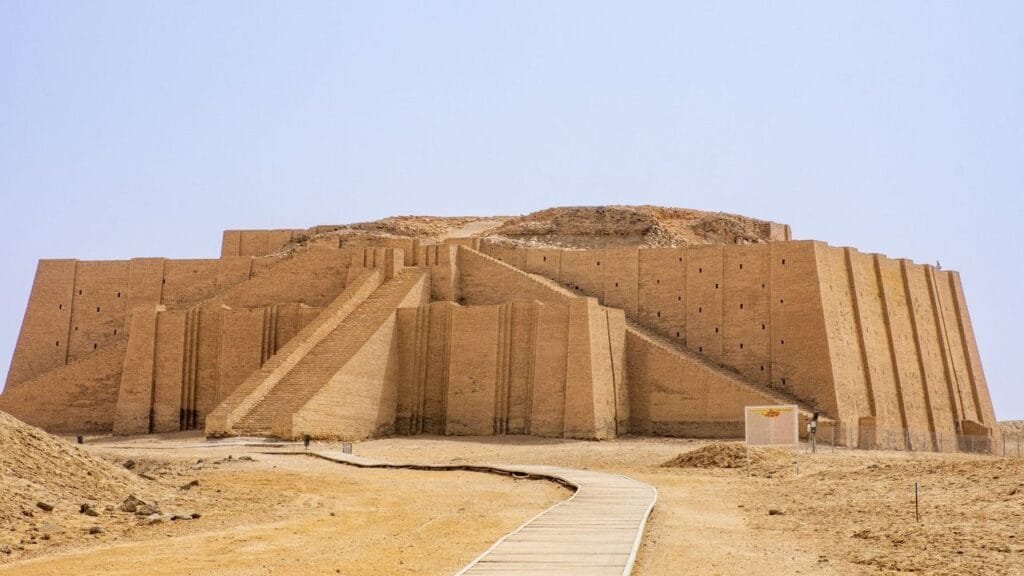What if humanity’s oldest myths hide a truth stranger than fiction? What if the beings (Anunnaki) we’ve called “gods” were not supernatural at all, but flesh and blood Survivors of a Lost Civilization?
For thousands of years, ancient texts have whispered about the Anunnaki. In Sumerian tablets, they stride through history as mighty deities, givers of kingship, bringers of law, wielders of power beyond mortal comprehension. Scholars translate their name as “those who came from heaven,” but what if “heaven” didn’t mean the stars at all? What if it meant something else entirely—something buried deep in Earth’s past?
Today, we’re diving into one of the most provocative possibilities in ancient history.
The idea that the Anunnaki weren’t gods.
They weren’t aliens.
They were people.
People from an earlier chapter of Earth’s story—one so advanced that its survivors looked like gods to early humans.
The Birth of the Anunnaki Legend
Picture Mesopotamia around 5,000 years ago. Cities rise from the floodplains of the Tigris and Euphrates. Ziggurats pierce the skyline like man-made mountains. Priests and scribes etch the first written language into wet clay.
And in those earliest records, we find the Anunnaki. Not vague, ethereal spirits. Not floating beings from another galaxy. They appear as leaders, judges, and builders, beings who shape the destiny of humanity.
The Sumerians wrote of them establishing kingship, founding cities, teaching agriculture and metallurgy. They described the Anunnaki walking among humans, eating with them, mating with them, even quarreling with them. This doesn’t sound like the way we describe intangible deities. This sounds like memory, memory of powerful, tangible beings.
When “God” Meant “More Than Human
Modern minds hear “god” and picture an all-knowing, invisible being. But ancient cultures often used the word to describe anyone who stood far above the human norm, anyone with knowledge, power, or longevity beyond ordinary reach.

Think of how pharaohs were called gods, or how kings became divine through ritual. The title “god” wasn’t always about metaphysics. It was about status, technology, and awe.
So what happens when a small, agrarian people encounter survivors of a civilization whose knowledge eclipses theirs? The Sumerians would see tools as magic, engineering as miracle, and knowledge as divine law.
What we call myths may be distorted memories. And the Anunnaki, far from being extraterrestrial, may represent the last echoes of a forgotten elite, humans who walked out of a ruined world carrying the remnants of their science.
The Puzzle of Sudden Civilization
Historians still puzzle over a strange pattern: civilization in Mesopotamia appears almost fully formed. Within a few centuries, writing, mathematics, irrigation, monumental architecture, and codified law erupt into history.
Where did it all come from? Did humans simply leap forward? Or did someone teach them?
Mainstream archaeology explains this as gradual development, but ancient texts often say the opposite. The Sumerians insisted their knowledge came from the Anunnaki. They named and listed them. They described their roles—Enki, Enlil, Inanna, Ninurta. These weren’t vague archetypes. They were individuals.
If we take the Sumerians at their word, the Anunnaki seeded civilization. Not as celestial angels, but as survivors passing on fragments of a legacy.
Lost Civilizations and Flood Myths
Now step back and look at a global pattern. Nearly every ancient culture tells of a catastrophic flood or disaster that ended a golden age. Sumer, it’s the Flood of Utnapishtim. In the Bible, Noah. India, Manu, and In the Americas, the Great Deluge.
These aren’t carbon copies. They’re variations of a single story, a world destroyed, survivors emerging to rebuild, knowledge passed on in fragments.
Could the Anunnaki be those survivors? Could their story begin not in the stars but in a drowned homeland?
Geologists have found evidence of dramatic sea-level rises around 12,000 years ago, coinciding with the end of the last Ice Age. Some researchers link this to the mysterious Younger Dryas event—a sudden cooling, widespread extinctions, and possible impacts or massive meltwater floods.
Imagine a civilization thriving before that cataclysm. Cities along now-submerged coastlines like the lost city of Dwarka that I have also covered in detail. imagine these city’s had technology lost when the seas rose. Its survivors fleeing inland, carrying tools, texts, and memories.
To Neolithic farmers, these people would seem like immortals—wielding powers from a vanished age.
Anunnaki Technology as Magic
Think about how a smartphone would look to someone in 3000 BCE. A glowing stone that shows moving images, speaks with voices, and stores endless knowledge. To them, you would look like a sorcerer.
If the Anunnaki carried even basic remnants of advanced technology, metallurgy, astronomy, medicine, they would appear as gods. Their “magic” might simply have been science far beyond the local level. Their “divine laws” might have been survival manuals, encoded into myth.
Even the structures we see today, the ziggurats seen here below.

also, the temples, the canals, may echo instructions from those survivors. We might be looking at the shadows of a blueprint.
The Shift from Myth to Memory
This perspective changes everything. It reframes myths not as fantasies but as history written in symbolic language. Enki, the “god of wisdom and water,” was once a leader from a coastal city. Inanna, the “queen of heaven,” was a brilliant strategist whose symbol, the eight-pointed star—marked an old order. Maybe the entire pantheon reflects an ancient caste system rather than a celestial one.
Of course, we must tread carefully. The evidence is circumstantial. We have no ruins of an Anunnaki city. We have no surviving devices or texts beyond Sumerian myths. But we do have patterns, patterns that repeat across continents, cultures, and millennia.
Why Survivors of a Lost Civilization Matters Today
Why should we care? Because our view of the past shapes our view of ourselves. If the Anunnaki were aliens, humanity plays a passive role, primitive beings uplifted by external visitors. But if they were survivors of a lost human civilization, the story changes.
It becomes our story.
A story of resilience, loss, and rebirth.
A story of how knowledge can survive cataclysm, how legends can encode memory, how humans can rise again after the world ends.
This perspective also invites humility. Civilizations fall. Sea levels rise. Technology disappears. We’re not immune to the same forces that may have erased theirs. And maybe, just maybe, the Anunnaki left their story as a warning, one we’ve only begun to decode.
Looking for the Missing Pieces
So where do we go from here? Researchers are diving into submerged coastlines, scanning with sonar and LiDAR, searching for evidence of lost settlements. Linguists and mythographers compare flood stories across continents, tracing the echoes of an older tongue.
Archaeologists once scoffed at Troy because it came from Homer’s epic. Then they found it. What might we find if we take the Anunnaki stories seriously, not as literal aliens but as distorted memories of real people?
We might uncover not just ruins but a mirror. A reflection of our own trajectory. A reminder that greatness can be forgotten, and that “gods” may have been us all along.
Speculation, Not Certainty
It’s vital to say this plainly: this idea is speculative. The mainstream view holds that the Anunnaki were purely mythological. No accepted evidence proves a lost civilization behind their legend.
But speculation has value. It opens doors and challenges assumptions and encourages new research. And if we treat myths as maps rather than fantasies, they may guide us toward truths we’ve overlooked.
The Hook We Can’t Shake
So the next time you read about the Anunnaki, those mysterious “gods” of Sumer—ask yourself:
Were they really divine beings descending from the stars?
Or were they survivors, carrying the torches of a lost age into the dawn of ours?
Maybe myths aren’t about visitors from other worlds.
Maybe they’re about us, our ancestors, our forgotten past, and our future.
The answer waits somewhere between myth and memory. And every clay tablet, every submerged ruin, every whisper of an older world brings us closer to it.
Call to Action
If this possibility excites you, dig deeper. Explore the Sumerian texts yourself. Look into the flood myths across cultures. Read about the Younger Dryas. Connect the dots. History isn’t just what’s written in textbooks. Sometimes it’s hiding in plain sight—in the stories we’ve called myths for far too long.
Because maybe, just maybe, the Anunnaki weren’t gods at all.
They were us.